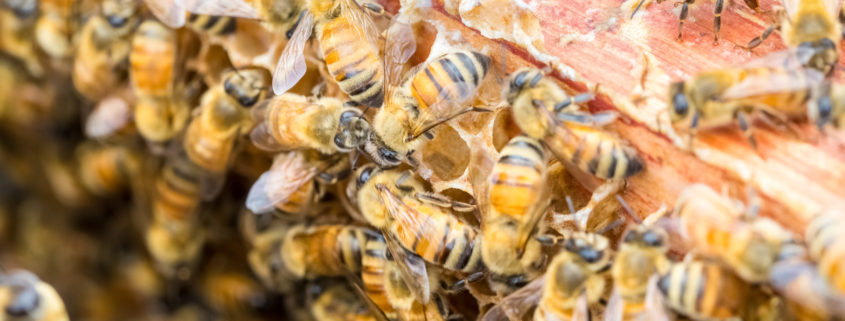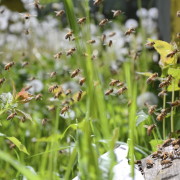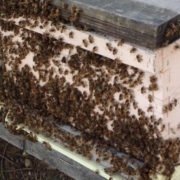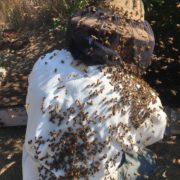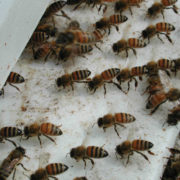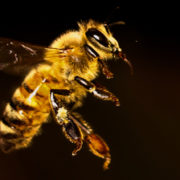Laying Workers
A funny thing can happen to a beehive when it remains without a queen for too long. The colony becomes so desperate for a queen that some of the workers take on the role of the queen and begin to lay eggs. This is what is called “laying” workers.”
Normally when a colony loses a queen bee, it immediately sets out to raise emergency supercedure queen cells from its larvae. If all goes well, the queenless colony will have raised a new queen within less than two weeks. Within three or four weeks, the new queen will have mated and will be up and running, and the colony will have recovered and be back to normal.
However, any number of things can go wrong in this process. The original colony may not have had any viable larvae for the colony to use to raise queen cells. Or the queen cells might get a virus or disease and not survive. Or a queen could die while on a mating flight, or not mate at all. In short, there are no guarantees that a colony can always successfully requeen itself.
Usually after about four weeks of not having a queen the colony becomes stressed and desperate. So, the colony’s emergency “solution” is that some of the worker bees take it upon themselves to “become” a queen. This doesn’t really work because the workers who now think that they are queens never actually mated. These laying workers are infertile, and are only capable of laying unfertilized eggs, which, unfortunately, only mature into drones.
As a beekeeper, when you inspect a colony with laying workers, you may, at first glance, think that all is well. You see eggs and larvae, and it can appear that a healthy queen is in place. There are, however, a few ways of determining if your colony has laying workers. Here’s what to look for:
The signs that you might have laying workers are that you may notice a disproportionate quantity of drone bees. A typical strong colony can have up to a few hundred drones. But if you are seeing more than a normal number of drones – especially in a weak colony – this is a red flag that you have laying workers.
Another telltale sign is noticing more than one egg or larvae inside a single cell. Laying workers are not experts in laying eggs like regular queens. So, laying workers make plenty of mistakes and will often lay two or more eggs in a single cell. Also, laying workers do not usually center their eggs in a cell. They sometimes miss the mark and leave eggs on the side of the cell, or off center rather than positioning them in the center of the cell like a regular queen would.
Your first thought of a solution to your laying worker problem might be to requeen the colony. Don’t even think about this; a colony with laying workers will almost never will accept a new queen. For better or for worse (mostly for the worse) a colony with laying workers already believes that it has a queen. Therefore, when a new queen is introduced, since the colony sees itself as already having a queen, it will see the new queen as an intruder and will kill it.
The best solution for a colony that has laying workers is to combine the entire colony into a strong, queen-right colony. The pheromone of the existing queen will quickly overpower the meager pheromones of the laying workers, so that the colony will soon forget about their laying worker “queens”. Let the two colonies work as one for a while. In short order, the bees from the colony of laying workers will completely combine with the strong colony, and become one with the original queen, long forgetting about the laying worker situation.
Later, you can make a new divide out of the strong colony, purchase a new queen for the divide, and start over fresh again.

